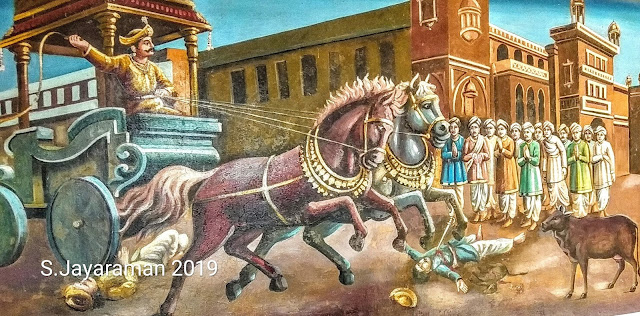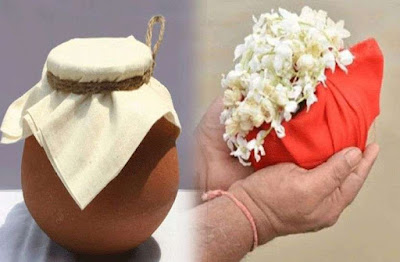Ancient Tamizh kings and Hinduism in Turkey !! - Part 1
After the submergence of Kumari kandam land under the ocean, people of lost Kumari kandam and ancient tamizhakam people had reached Persian gulf and started a new tamizh civilization there by following Sanatana Dharma and worshiping many hindu deities, Lord Shiva was considered as primary deity. Tamizh civilization in Persian countries can be connected in several ways and there are many facts to prove the existence of tamizh civilization over there. In my previous posts, I have already explained about Tamizh kings, civilization and culture in Iran.
In this post, will disclose the truth about tamizh kings of ancient Turkey and its destroyed roots of Hindusim (part2)...
1. Adiyaman province:
Mount Nemrut is one of the highest peaks in the east of Taurus mountain in turkey, which is near Adiyaman province. Malatya province is to the west of Adiyaman province.
Why it is named as Adiyaman ??? What is the meaning of Malatya ??
Adiyaman is the name of famous generous and powerful king of ancient tamizhakam, his full name is 'Adhiyaman Neduman Anci'. He was one of the 'Kadai ezhu valla', meaning last seven patrons. He ruled this region of Turkey and so it was named after him. Couldn't believe this?? Continue to read to get a clear idea...
This is not just about the name of the place Adiyaman which is matching with the tamizh king, there are some more facts for it. King Adhiyaman's kingdom was situated on the eastern valley of Malaya mountains of the Western Ghats of ancient Tamizhakam. So he named his another province in Turkey as 'Malatya', in the honour of his kingdom in tamizhakam.
If this is not true, then why Adiyaman and Malatya provinces has to be named in tamizh, that too as an adjacent province??? Check out the picture below for the same...
Not only as an adjacent province, there are some more reasons behind the name Malatya. In tamizh, the rulers of hill countries were called as 'Miladu mannar' (King of Hills), Malayarayar , Milad udaiyan (One who have hills) etc.
2. Miladu or Maladu is a very pure Tamil form of Malainadu or the hill country. How this is related to Malatya in Turkey??
There is an ancient city in Turkey which is considered as one of the earliest human settlements and that city has been identified with the modern archaeological site near Malatya, Turkey. The name of this city is Melid (In Hittite: Malidiya) also known as Arslantepe. Why it has to be named as Malidiya, which is similar to Miladu and that too in Malatya province ??
Between this Melid and Carchemish regions, there was an Iron Age Neo-Hittite kingdom (around 2000 BCE) called as 'Kummuh' / Kammanu. Several indigenous rock inscriptions have been found in that region (written in hieroglyphic Luwian), attesting to the continuity of Hittite traditions. Assyrian king Sargon II was referred to the Kummuh ruler as 'Hittite' and several rulers of Kummuh bore the same names as famous Hittite kings of the 2nd millennium BCE. Kummuh was later called as Commagene.
Why am I mentioning about Hittites here ? Here you go...
3. Pattin
The capital city of Iron Age Neo-Hittite kingdom was Pattin (also known as Pattina, Patina). The famous archeological mound 'Tell Ta'yinat' is situated at this Pattin region. It is a low-lying ancient mound on the east bank at the bend of the ancient Orontes river. Why was it named as Pattina ??
In Tamizh, the shore side ports and towns are called as 'Pattinam'. Examples: 'Kaveripoom Pattinam', 'Chennai pattinam', 'Naga Pattinam', 'Thenga Pattinam', 'Kayal Pattinam', 'Kulasekara Pattinam', Malli Pattinam'.
Similarly, as this city is situated at the shore side, it was named as 'Pattina' by the tamizh kings. If not tamizh kings, then why was it named as 'Pattina', that too exactly matching with the tamizh naming conventions of port cities???
Check out the picture below and look into the location of Pattina (light green color region near sea).
4. Famous tamizh king Manu Needhi Cholan
Apart from Pandya kings, Cholas were also ruled Persian countries. One such famous Chola king is 'Manu Needhi Cholan', who had ruled Turkey. Manu Needhi Cholan was a title given to the chola king, as he had executed his own son under the wheels of his chariot to provide justice to a cow, by following 'Manu' Dharma (meaning: Justice). Then, what is his original name ?
This Chola king name is 'Ellalan', he had ruled ancient tamizhakam and Sri Lanka. There is also a name of a place in Turkey in his name.
Why this place is named as 'ellalan' / 'yelalan' in Turkey?? (in tamizh, Yelalan was pronounced as elalan with 'y' silent)
The Tamizh name Ellalan means 'the one who rules the boundary". Not only Yelalan, there are many places in Persia which was named after great tamizh kings. |
5. Elankovan, tamizh king
Yelankovan, is a name of early tamizh king. There is also a place in Turkey which is named after this king Yelkovan, its a proper tamizh name.
In tamizh,
Yelam (pronounced as elam with 'y' silent) - means young,
Kovan - means king
6. Alangulam
In Tamil nadu, there are some excavations happened recently in a village called 'UkkiranKottai' in Tirunelveli district. This has thrown some light on early human settlements and trades during Pandya kings period in that place. Tirunelveli was an ancient city and it was a secondary capital of Pandya kings.
Many ancient artefacts have been found in a place located between Azhagiya Pandiyapuram and Alangulam, such as remains of ancient temples besides tiles, terracotta figurines, decorated pot shards, Chinese pots, beads and bangles have been found. Based on the architectural design of the basement and other remains such as tower, we assume that it belongs to early Pandiya rule
Alangulam - in this name, there is also place in turkey. Why it has to be named in tamizh, as Alankulam ?
Ukkirankottai was historically and politically important place during the Pandya rule. It served as an important military base for the early Pandiya kings and it was earlier called as Karagiri or Karakondapuram.
There are many places in Turkey named as 'Karakiri', for example: Karakiran, Mount Karakiris, Karakisi, Karakiriklar and much more...
i) Hasankeyf is the most ancient city in Turkey. In ancient times, this city was called as 'ilansura', which was mentioned in the tablets (2000 BCE) from the Mari site. Ilansura is a tamizh word.
ii) Behramkale was an historically rich town in Turkey. From there, archaeologists discovered an undamaged family grave. The grave belonged to a family of 21. One of the family members was buried normally, while the remaining 20 were cremated and their ashes were placed inside urn-like vases. The lids were sealed off with cement in order to prevent any foreign substance getting inside the urns.
This ritual was taken from Hinduism. In Hindusim, we don't burry a dead person, we cremate them. After cremation, the ashes of it will be keep it in a covered urn, which will be poured into the seas later.
Thus in ancient turkey people had followed Hinduism, spoke tamizh and followed tamizh culture !!. Next part of this post will cover more about Hinduism...
Under the rule of early pandya kings in Turkey, tamizh society had progressed thoroughly. Later, it was then ruled with diversification of descendants of Pandya, Cholas, Cheras and other minor kings. The extensive trades during Pandya rule in Turkey, more references regarding Kumari Kandam over there and Hinduism in Turkey will be covered in next part of this post.- to be continued in part 2..
- Aarthi Thiyagarajan








Very good article mam..pls keep posting
ReplyDelete